9 Pets That Are Great for Small Spaces
There are a few animal companions you might not have considered for your apartment.

Living in a smaller space comes with plenty of challenges, but it can be even more difficult if you're craving some animal companionship. After all, a tiny apartment or condo might make it feel like there's nowhere to fit an extra four-legged roommate and all the supplies that come along with it. However, just because you don't have ample square footage doesn't mean you can't make room in your home for a new friend. Read on for the pets that are great for small spaces, according to veterinarians.
RELATED: 7 Red Flags That Your Pets Need to Be Separated, Veterinarians Warn.
1
Dog
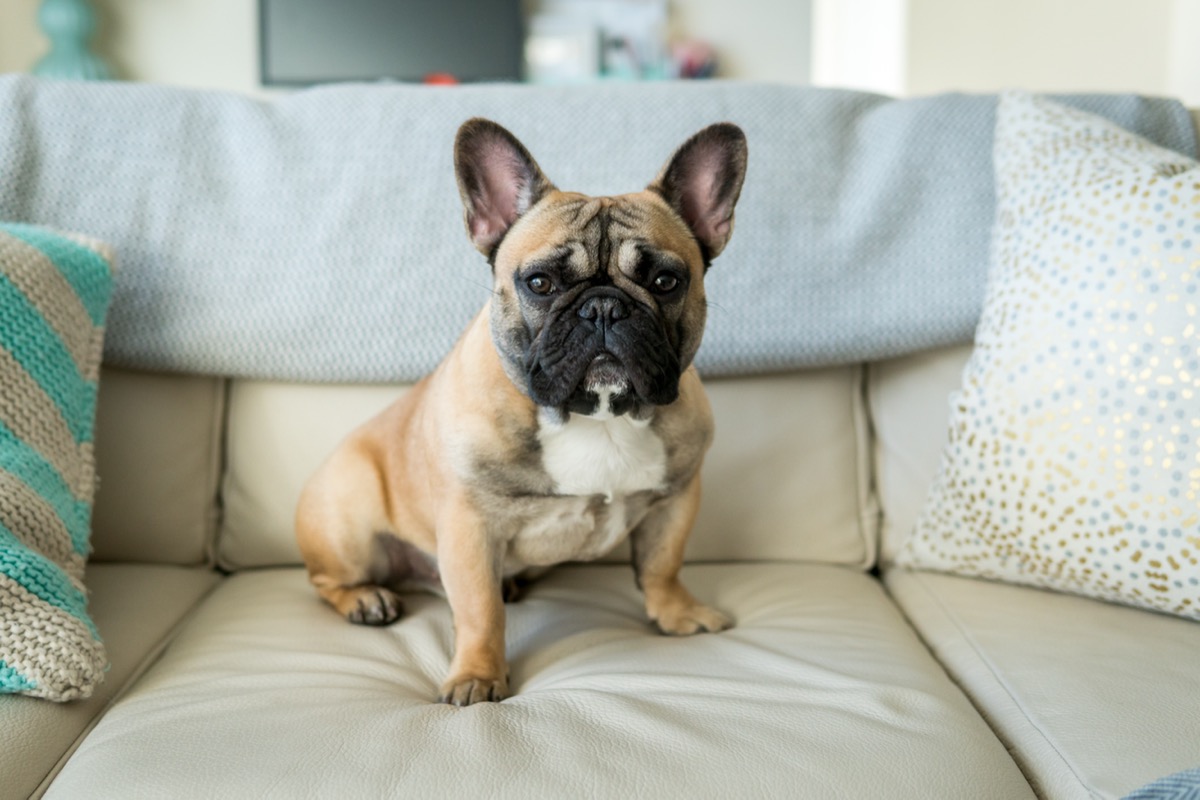
Small-space living doesn't disqualify you from owning a dog. "While a good rule of thumb may be big dog equals big space and small dog equals small space, dogs of all sizes can do wonderfully in a small space as long as they have the ability to get out daily," says Matthew McCarthy, DVM, a veterinarian and founder of Juniper Valley Animal Hospital in Queens, New York. "Your dog needs exercise, depending on their age and physical condition, and even old wobbly dogs like to go up and down the block."
By exercising regularly with your dog, you'll deepen your bond, improve their sleep quality, and prevent inappropriate behaviors, such as chewing, which are caused by boredom. "Even if you have what would be considered a small space, it is, no doubt, a more spacious and safe space than any shelter could be for these guys," McCarthy assures.
2
Cat

Cats may judge you for a lot of things, but not the size of your space.
"For cats, it's all about an enriched environment, which is an environment that allows for all their necessary cat behaviors of playing, hunting, and climbing," says McCarthy. "Because cats can go vertical, one can get by in much less space compared to other species."
As long as they have plenty of perches, shelves, and cat trees, they'll be happy. McCarthy also recommends food dispensing toys, which will help with their hunting instincts, and playtime with other humans and kitties. He says that you can usually fit two cats in the average studio apartment before they start feeling cramped.
RELATED: 10 Dog Breeds That Bark the Most, According to Veterinarians.
3
Rabbit
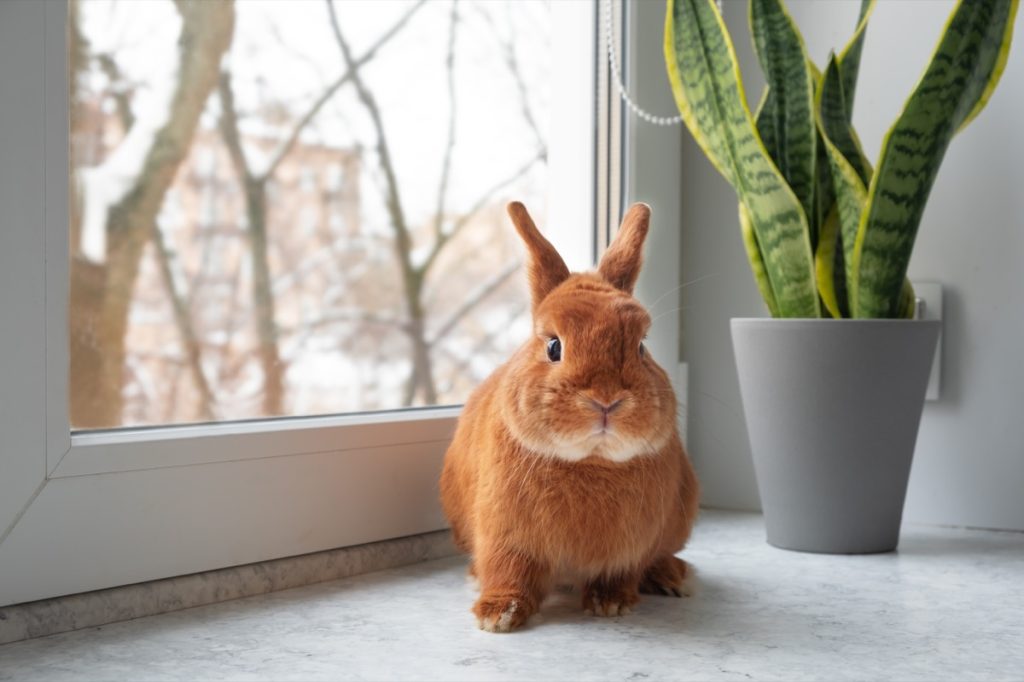
With their adorable faces and soft fur, what's not to love about a rabbit? But despite their reputation for high speed, experts say they actually make for an excellent option for those without a ton of square footage.
"Rabbits can be great pets for small spaces, especially the smaller breeds such as the Mini Rex," says Dwight Alleyne, DMV, a veterinarian and pet expert with JustAnswer. "They are similar to cats in that they can be litter-trained. Also, they don't need a lot of space to roam around, and they are generally very quiet pets."
4
Rat
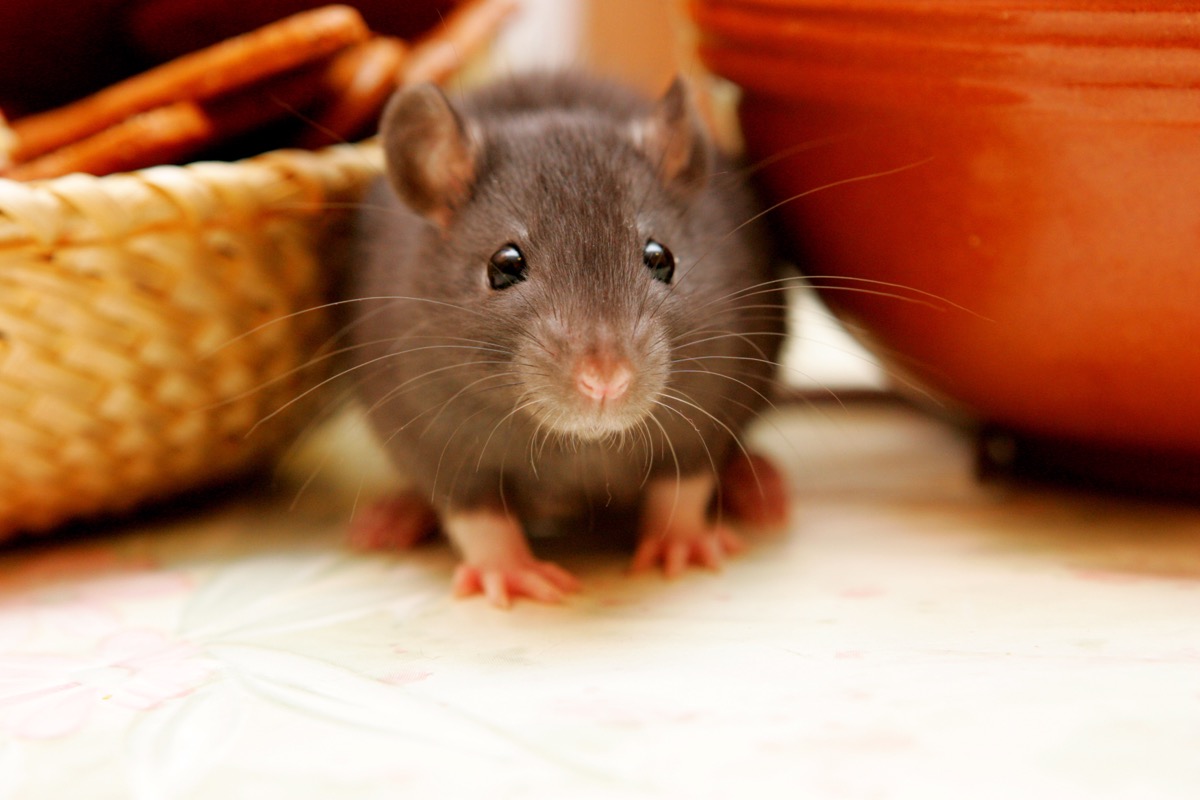
If your home has space for a small enclosure, then you'll want to consider a rat as your next pet. These little guys are cuddlier than you might think: MacCarthy notes they love to curl up in your lap while you read or watch TV.
One thing to consider? You'll probably want to adopt more than one. "They are quite social and like to be kept with at least one or two other of their brethren," he says. "Same-sex pairs or groups are ideal as it will keep you out of the breeding biz. Males usually get along fine with other males, especially if introduced at a young age or if they are littermates." Fortunately, the space you need for two rats isn't much larger than the space you'd need for one.
5
Giant African Land Snails (GALS)
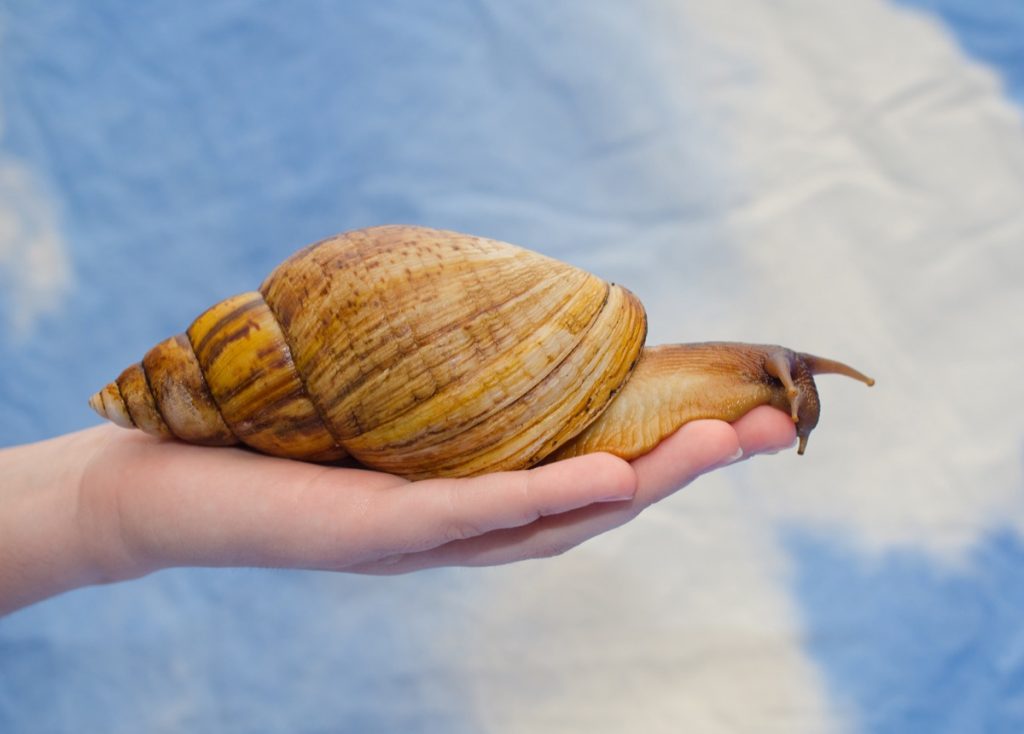
Not all pets ideal for small spaces have tails they can wag or whiskers they can flick to make themselves look cute. In fact, some don't even have arms, legs, or a spinal column, for that matter.
"They might sound yucky, but people who have Giant African Land Snails (GALS) say they have personalities and are great fun to watch and handle," says Joanna Woodnutt, MRCVS, a veterinarian at Petlearnia. "They're also space-saving, with the smaller species getting away with a 20-liter tank for a single snail."
However, she warns there's at least one thing you need to be careful of after you adopt them. "As hermaphrodites, they can reproduce on their own, so you'll need to clean out and destroy any eggs regularly, or you'll get taken over!," Woodnutt says.
6
Newt
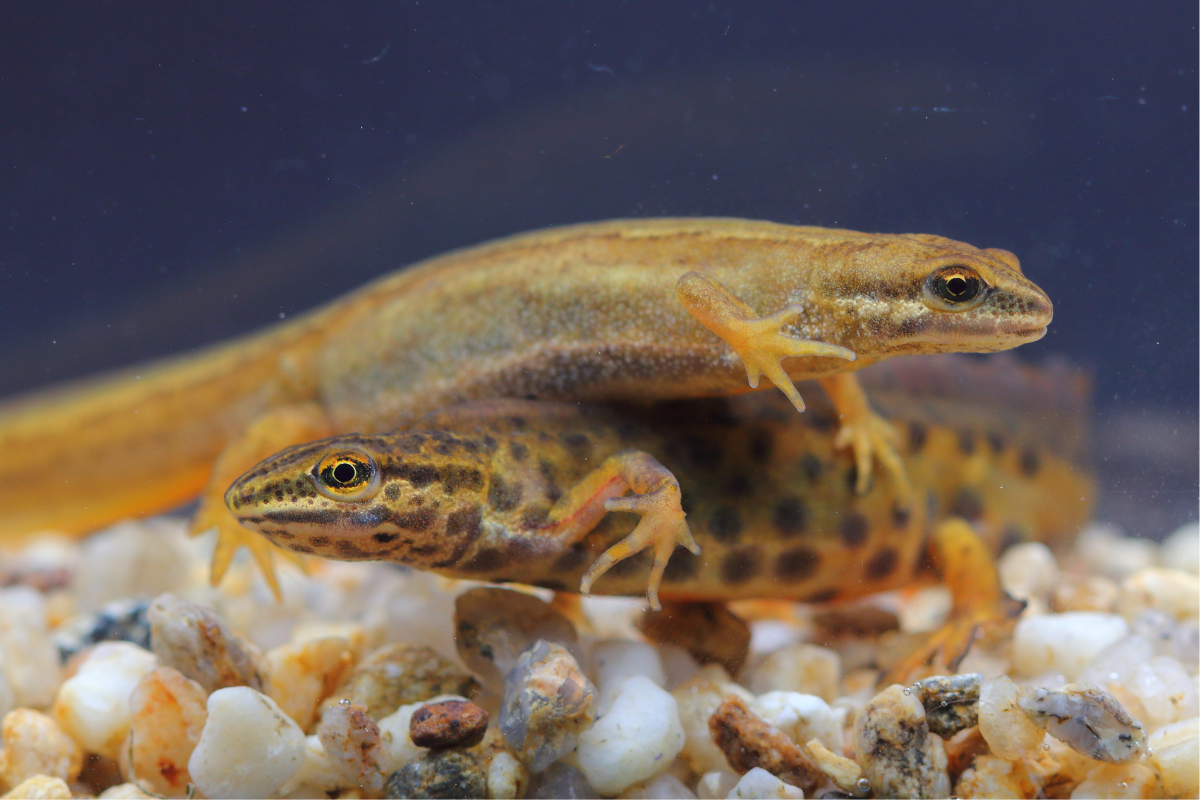
These hardy pets can live up to 25 years when cared for properly. All they require is a small aquarium of about 15 gallons for one adult; the tank doesn't even have to be heated if your home has an average temperature between 60 and 75 degrees.
When shopping for your new pet, "make sure that it is an eastern newt," suggests McCarthy. "Many of the other, more exotic, western newts secrete a potent neurotoxin from their skin that you really don't want to mess with."
Once they're set up at home, you'll have hours of fun watching your newt navigate its small-space-friendly enclosure.
RELATED: The 10 Most High-Maintenance Dog Breeds, New Study Shows.
7
Syrian Hamster
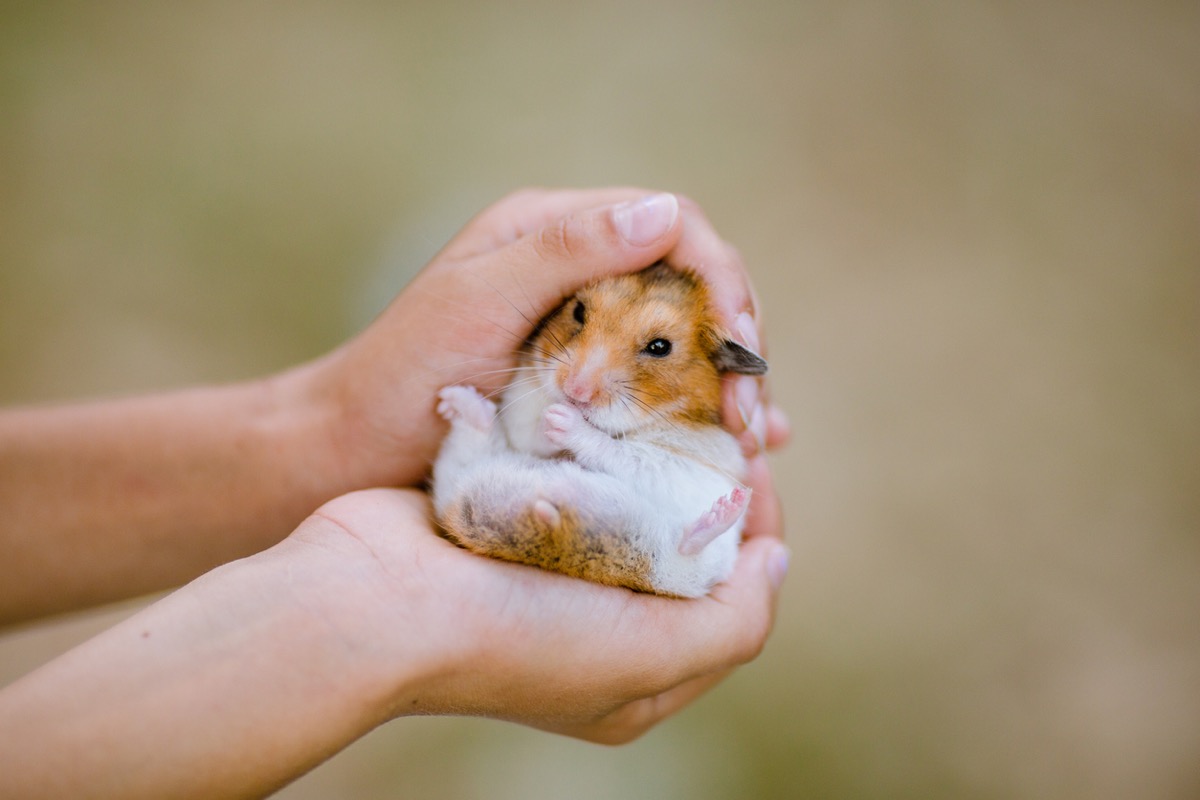
This nostalgic pet is easy to care for and fun to watch. And the best part? Their cage doesn't have to be much more than two feet long, one foot wide, and one foot tall.
Just remember that Syrian hamsters are quite solitary, and you'll want to house them alone. "Bear in mind that they are nocturnal critters, so typically sleep for most of the day, so you might not get to see them at their most active," says McCarthy. "That being said, most hamsters will wake in the evening hours and happily interact with their humans then."
And if you still have your doubts, just wait until the first time you get to watch them run on their wheel.
8
Bird

Just because you live in a smaller space doesn't mean you can't have the company of a feathered friend.
"Birds can do well in small apartments," says Alleyne. "Small birds, such as canaries, don't usually require a lot of interaction and are quiet. All they need is a clean cage and normal feeding routines."
So long as you have space for an appropriately sized cage and a little place to play, you should have no problem welcoming them into your home. But be warned that every animal is different, meaning even specific breeds that are typically quiet can sometimes end up being noisy or require a decent amount of care.
9
Turtle
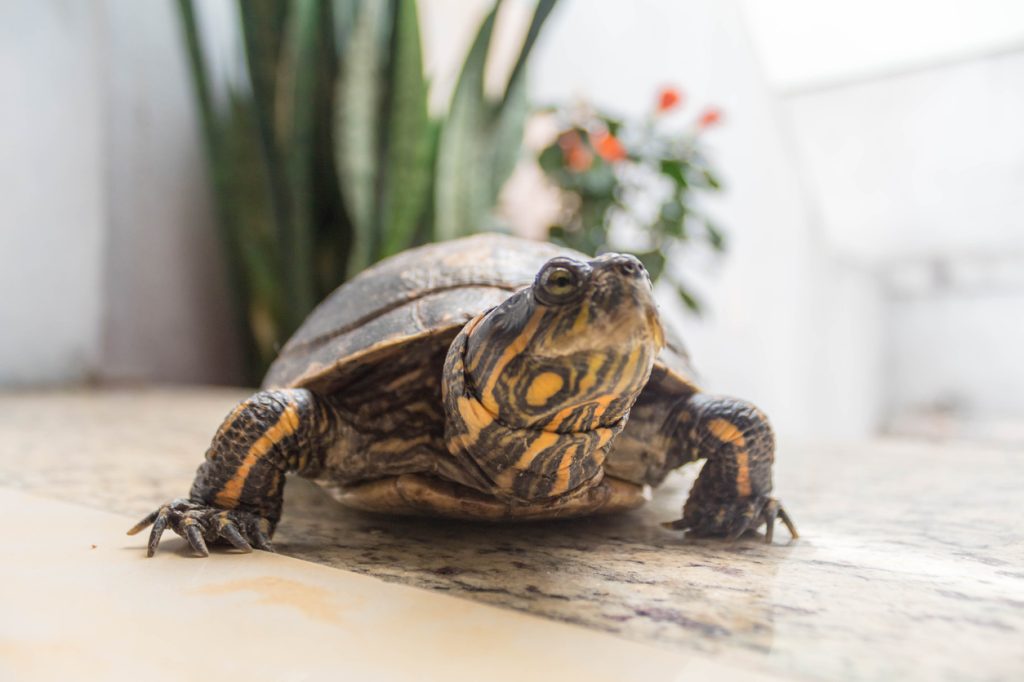
As the poster child for all things slow-moving in the animal kingdom, it's no surprise that one hard-shelled creature is a solid option for anyone working with less living space.
"Reptiles such as small turtles can work well in a small apartment since they are mostly contained in an aquarium or terrarium," says Alleyne.
However, it's important to note that turtles need more than just a wet space to live in. Setting up a turtle habitat will also require proper heating, lighting, and water filtration. And given their extensive lifespans, turtles are also a considerable time commitment in the long run, so be ready to make friends for life.
This story has been updated to include additional entries, fact-checking, and copy-editing.





















